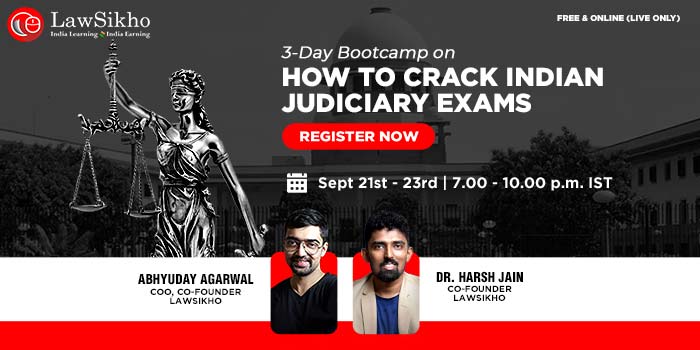

This article is written by Taniya Yadav, a law student at Allahabad University. This article attempts to explain mutual divorce and various aspects related to the mutual divorce process in India in an understandable way.
It has been published by Rachit Garg.
Table of Contents
“Divorces are made in heaven,” as aptly said by Oscar Wilde in his play “The Importance of Being Earnest.” One cannot control loving or unloving another human being, it’s just the way it is. Had it been in anyone’s control, there would not have been so many people unhappy in their marriages. In today’s world, people want to be married, but on their own terms and conditions, and when those terms and conditions are not met, they are, without any social stigma, ready to leave the marriage for their own well-being. Every individual has the right to live a happy and fulfilling life, and if marriage is preventing the individual from attaining that, then it should come to an end. That’s why the concept of mutual divorce exists, and basically, it came into existence to bring people out of unhappy marriages so that they could reclaim their lives and their happiness. The mutual divorce process in India is going to be the subject matter of this article.

A divorce is a judicial declaration that the marriage between two individuals has come to an end. Marriages in India are governed by various laws, and so is divorce. It gives an individual the opportunity to live life from a fresh perspective and saves them from unnecessary mental stress.
Mutual divorce is a type of divorce where both parties decide that their marriage should come to an end. It is one of the most preferred types of divorce as it saves the time and energy of the parties involved and doesn’t make a hole in their pocket by extending the process unnecessarily to infinity.
Mutual divorce in India can be obtained by applying the following provisions –
As per Section 10A of the Indian Divorce Act, 1869, the parties can go for mutual divorce only when they have fulfilled the following condition –
The conditions which the parties are required to fulfil to obtain a mutual divorce decree from the court –
In uncodified Muslim law, divorce by mutual consent is divided into two types –
1. Khula – Khula is a divorce with the consent of the husband and at the instance of the wife in which she gives or agrees to give a consideration to the husband to release her from marriage.
2. Mubarat – In Mubarat, both parties are in favour of judicial separation.
Section 28 provides the grounds on which a petition for mutual divorce can be filed in court. The grounds are –
Things to keep in mind before heading for a mutual divorce are:-
A mutual divorce can be filed in the family court of the following jurisdictions –
The grounds for obtaining a mutual divorce are more or less the same in all religions and therefore a mutual divorce can be filed when the following conditions are fulfilled –
This means that the parties agree on getting their marriage dissolved throughout the divorce proceedings in court. If at any point either of the parties withdraws their consent, the divorce will not be granted by the court as it no longer remains a mutually contested divorce.

In Mr. Prakash Alumal Kalandari vs. Mrs. Jahnavi Prakash Kalandari (2011), the Bombay High Court held that when a joint petition under Section 13B of the Hindu Marriage Act, 1955, is filed, the Court assumes that the parties are consenting to divorce throughout the divorce proceedings until they prove otherwise. If either of the parties withdraws their consent, then the court no longer holds the power to grant a divorce decree.
This means that a mutual divorce cannot be filed when parties are living with each other. Separation for at least a year before filing the divorce petition is a mandatory criterion for obtaining a mutual divorce. If parties are living under the same roof but are not living with each other as husband and wife, then such a situation will also be counted as separation.
In Miten vs. Union of India (2008), the Bombay High Court held that living separately for one year is an essential condition for filing for divorce under Section 13B of the Hindu Marriage Act, 1955. It cannot be waived as the legislature has inserted this section keeping in mind the existing situation in society, and any interpretation of the law does not support such a waiver.
The parties, in spite of putting in all the effort, are not able to live with each other, and the only option left to them is a mutual divorce.
In Sureshta Devi vs. Om Prakash (1991), the Supreme Court opined that the phrase ‘had not been able to live together’ simply means that the marriage has broken down to such an extent that reconciliation cannot be imagined. It is obvious that they cannot tolerate each other anymore, and that’s why they have filed a mutual divorce petition. Though, it is important to verify that their consent is based on their free will and not on any fraudulent means.
The process goes in the following steps –
This petition is presented before the family court by mutual consent of the parties. In this petition, the parties specify the time and place of their marriage, the time since when they are not living with each other, the reasons behind their broken marriage, and why they should be given a divorce. The period of living separately should not be less than one year, and both parties are mandated to sign the petition. Court fees are submitted along with the petition.
After the filing of the petition, the parties will appear before the court and make their statements. The court will examine the facts mentioned in the petition and the documents submitted with it. The court may attempt to unite the parties, but if the marriage is broken beyond reasonable limits, the court may continue with the process. The court may even waive the cooling-off period, which is a minimum of six months and a maximum of eighteen months. If the cooling-off period is not waived, then the second motion can be filed after six months of the presentation of the petition before the family court and before eighteen months of the same.
As soon as the parties appear for the second motion, they proceed with the final hearing. Joint statements are recorded again, and if the issues relating to alimony, custody of the child, and maintenance are settled, then the court passes a decree of divorce. After the decree has been passed, the marriage gets dissolved.
The following documents are required for filing a mutual divorce petition in India –
No cooling-off period is provided in Parsi Marriage and Divorce Act 1936.
In cases of Khula –
In cases of Mubarat –
In Smruti Pahariya v. Sanjay Pahariya, (2009), the Supreme Court held that the non-attendance of a spouse in court in a mutual consent divorce petition cannot be assumed as consent after the expiry of the six-month cooling-off period. The fact that they signed the first motion under Section 13B of the Hindu Marriage Act, 1955, plays no role in establishing their consent in the second motion.
In Anamika Srivastava v. Anoop Srivastava, (2022), the Allahabad High Court held that it is not supposed to force parties to engage in mediation where the marriage has irretrievably broken down, considering the fact that the parties have been living separately for eleven years and have appeared before the mediation centre of the court and have failed to reconcile.
In Sandhya Sen v. Sanjay Sen (2019), the Chhattisgarh High Court held that the existence of a dispute was not a prerequisite for the grant of divorce by mutual consent as the parties had lived together for only two days after the marriage. The Court held that if an application is otherwise duly constituted and properly presented before the court, it is not the responsibility of the court to search for grounds or reasons which has compelled the parties to seek divorce by mutual consent.
In Amardeep Singh v. Harveen Kaur (2017), the Supreme Court held that the cooling-off period provided in Section 13-B(2) of the Hindu Marriage Act should be read as a directory provision and not mandatory. As the parties, in this case, had been living separately for eight years, there was no hope of them getting back together.
In Hitesh Bhatnagar v. Deepa Bhatnagar (2011), the Supreme Court held that if the second motion is not passed within eighteen months, the court is not bound to pass a decree of divorce by mutual consent. It also held that either party might withdraw their consent at any time before the decree is passed. In this case, it was held that unless both parties mutually agree on getting a divorce and convince the court regarding the same, the court will not grant the divorce.
Anna Quindlen, in her novel ‘Alternate Side,’ said, “When one of you wanted one life, and the other wanted something completely different, there was a technical term for that: irreconcilable.” Divorce is a tough decision that should be taken with the utmost care as it not only affects the people involved in the marriage but also the people related to them. But it cannot be held back if the marriage has reached a point where it is causing more pain than happiness. Therefore, divorce by mutual consent is a great way to end all that trauma, and the process for the same is made extremely uncomplicated by the legislature and judiciary to help people walk out of unhappy marriages without burdening them with more mental stress.
The time varies from case to case, but usually, it takes anywhere from 6 months to 2 years to obtain a mutual divorce.
Yes, if the court is of the opinion that the marriage has broken down irretrievably and there is no scope for the parties to come to terms with each other, then the court can waive the cooling-off period.
Yes, it can be withdrawn anytime before the court has passed the decree. If either of the parties withdraws their consent, it no longer remains a mutual divorce.
Yes, Non-Residents of India can file a petition for mutual divorce in India, but they need to produce additional documents to prove their jurisdiction.
Students of Lawsikho courses regularly produce writing assignments and work on practical exercises as a part of their coursework and develop themselves in real-life practical skills.
LawSikho has created a telegram group for exchanging legal knowledge, referrals, and various opportunities. You can click on this link and join:
Follow us on Instagram and subscribe to our YouTube channel for more amazing legal content.